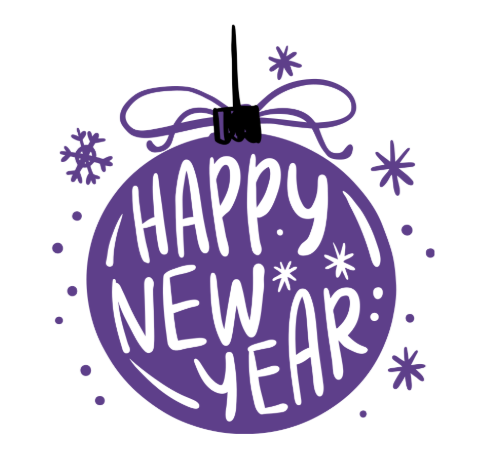In today’s fast-paced work environment, getting more done in less time can seem like a challenge. But the truth is, you don’t need drastic changes to boost productivity. With a few effective techniques, you can work smarter, not harder. Let’s explore 15 examples that will help you increase productivity in your workplace.
1. Set Clear Goals
First things first:
Without clear goals, you’ll waste time and energy. Setting SMART goals—Specific, Measurable, Achievable, Relevant, and Time-bound—will give you direction. When you know exactly what you need to accomplish, you’ll find it easier to stay focused.
Clear goals help you measure progress and keep your work on track. Whether it’s daily or long-term goals, they provide a roadmap that helps you move forward with purpose.
2. Prioritize Tasks
Here’s the deal:
Not every task is equally important. That’s where prioritization comes in. Use methods like the Eisenhower Matrix to divide tasks into four categories: urgent and important, important but not urgent, urgent but not important, and neither.
By prioritizing high-impact tasks, you ensure that you’re putting your time and effort into what truly matters. Start with tasks that have the most significant impact, and work your way down from there.
You can use our free Eisenhower matrix template to prioritize your tasks effectively.
3. Use Time Blocking
Now:
Time blocking is a simple but powerful strategy. It involves scheduling your day into specific blocks of time for each task. For instance, allocate 9 AM to 10:30 AM for answering emails, then dedicate 10:30 AM to 12:00 PM for focused project work.
This method limits the time you spend switching between tasks, helping you stay focused and productive. Time blocking also gives structure to your day, making it easier to avoid distractions and procrastination.
4. Limit Distractions
You might be wondering:
How can you limit distractions when the office environment is so chaotic? Start by turning off notifications on your phone and computer during focus periods.
If your workspace is noisy, consider noise-cancelling headphones or relocating to a quieter area. You can also set clear boundaries with your colleagues by letting them know when you’re unavailable for interruptions. Small steps like these create a distraction-free zone, allowing you to stay focused on what’s important.
5. Delegate Work
No one can do it all.
Delegating tasks is not only about lightening your load—it’s about working smarter. Identify tasks that can be done by others and assign them accordingly.
This allows you to focus on high-priority tasks that require your expertise. Delegation also strengthens your team by empowering others to take on responsibility, which boosts overall productivity across the board.
6. Take Breaks
What’s the bottom line?
Breaks are crucial to maintaining high levels of productivity. Research shows that the brain can only stay focused for a limited time before it starts to lag.
By taking short, regular breaks, you allow your mind to recharge, preventing burnout. Even a 5-minute walk or stretch can refresh your focus and energy. When you return to work, you’ll be able to dive back in with a clear head and renewed motivation.
7. Automate Repetitive Tasks
This is crazy:
You may be spending hours on repetitive tasks that can easily be automated. Automating tasks such as email responses, scheduling, and data entry will save you a lot of time.
By leveraging tools like Zapier, email filters, and scheduling software, you can streamline repetitive work. Automation frees up time that you can redirect towards more complex and creative tasks that require your attention.
8. Keep Your Workspace Organized
A cluttered space equals a cluttered mind.
When your workspace is disorganized, it’s harder to concentrate, and you waste time searching for items. By keeping your desk and digital workspace tidy, you create an environment that encourages productivity.
Invest in file organizers, digital folder systems, and desktop decluttering tools. Clear up your space, and you’ll notice how much easier it is to focus on your work.
9. Use the Pomodoro Technique
But here’s the kicker:
The Pomodoro Technique is a proven way to maintain focus over long periods. Work for 25 minutes, then take a 5-minute break. Repeat this cycle four times, then take a longer 15-30 minute break.
This technique aligns with the brain’s natural attention span, preventing mental fatigue and allowing for consistent, high-quality work throughout the day.
10. Set Deadlines
Want to know the best part?
Deadlines push you to work faster and stay on track. By setting both hard and soft deadlines for yourself, you create a sense of urgency that prevents tasks from dragging on.
Even if the task doesn’t have an official deadline, set a personal one. This simple trick will motivate you to finish tasks quicker and more efficiently.
11. Limit Multitasking
It gets worse:
Multitasking often reduces the quality of your work. Every time you switch between tasks, your brain has to readjust, which can waste time and lower your productivity.
Focus on one task at a time. When you give your full attention to each task, you complete it faster and with better results. Once a task is done, move on to the next one.
12. Use Collaboration Tools
Effective communication is the key to team productivity.
Tools like Slack, Trello, and Asana help you manage projects, track tasks, and keep communication organized. These tools ensure that everyone is on the same page, reducing the back-and-forth that slows down work.
Collaboration tools also allow for real-time updates, meaning you can make quick adjustments and keep the workflow moving smoothly.
13. Review Your Progress
Don’t just keep working—review your progress.
At the end of each week, take time to assess what you’ve accomplished. Did you meet your goals? Were there any roadblocks that slowed you down?
Reflecting on your work helps you identify areas for improvement and spot successes worth celebrating. This self-awareness will help you fine-tune your approach for even better results in the future.
14. Stay Healthy
Productivity starts with your well-being.
When you take care of your physical and mental health, you can work longer and more efficiently. Make sure to get enough sleep, eat balanced meals, and incorporate exercise into your routine.
A healthy lifestyle gives you more energy and mental clarity, which directly impacts your work performance.
15. Celebrate Wins
Lastly, celebrate every victory—big or small.
Acknowledging your successes keeps you motivated. Whether it’s completing a major project or finishing a small task, take a moment to reflect and reward yourself.
Celebrating wins, no matter the size, reinforces positive behavior and keeps you energized for future work.
Boosting productivity doesn’t have to be overwhelming. By implementing strategies like setting clear goals, automating tasks, and taking regular breaks, you can increase your efficiency without burning out. Apply these 15 examples in your workplace, and watch your productivity soar!



